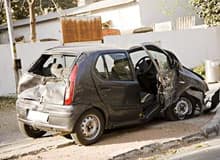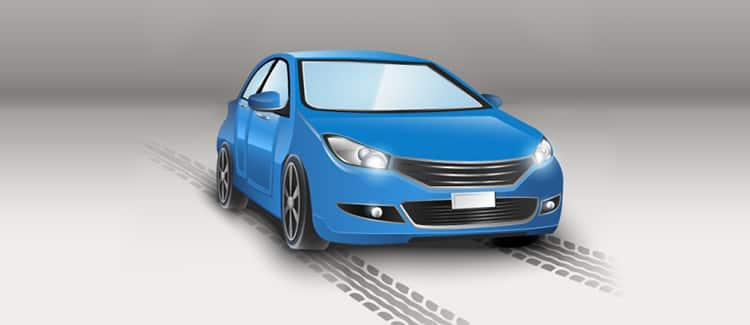-
Renew policy in 2 minutes*
-
21+ Insurers to choose
-
1.2Cr+ Vehicles Insured

-
Home

-
Motor Insurance

-
Car Insurance

-
Articles - CI

- Difference Between First-Party and Third-Party Car Insurance
First Party Vs Third Party Car Insurance: Know the Key Difference
Whenever you see someone discussing car insurance, you may often hear the term ‘third party’ or even ‘first party’. If you are not well-versed with these motor insurance terms, you may not know what they mean in your four-wheeler insurance policy. Read on to learn more about first-party and third-party car insurance and their differences.
Different Parties Involved in Car Insurance
Car insurance is a contract between two parties- the car owner and the insurance provider. However, every car insurance policy talks about third parties as well. Thus, a car insurance policy involves three parties. Take a look at them below:
- First Party - In an insurance contract, the first party refers to the person who buys the insurance. Thus, the car owner is the first party in a car insurance policy. It is the first party who pays an insurance premium and makes a claim to receive benefits or compensation under the motor insurance policy.
- Second Party - The insurance company from which the car owner or the first party purchases the car policy is called the second party. The second party promises to provide financial protection to the first party's car in case of loss or damage. In exchange, the first party is liable to pay a premium amount to the second party.
- Third Party - Any person besides the first and second parties is considered a third party under four-wheeler insurance. It refers to any person who gets affected by the actions of the first party while he/she is driving the insured car. A third party can be anyone and does not have to be an acquaintance of the first or second party.
For example, it could be a pedestrian walking on the street or the owner of a car moving in front of you. Under a motor insurance policy, the second party is liable to pay for any injuries, loss or damages caused to the third party on behalf of the first party.
Remember that it is the first party who initiates a contract with the second party in a bid to buy the right car insurance policy for his/her vehicle.
What is First Party Car Insurance?
First-party car insurance is the type of car insurance that benefits the first party. It provides coverage for own damages, which makes the second party, i.e. the insurer, liable for covering any loss or damages caused to the first party's car due to unfortunate events. These events include natural disasters (earthquakes, storms, etc.), man-made disasters (strikes, vandalism, etc.), accidents, fire or theft.
Apart from the basic coverage, first party car insurance can also be enhanced with a host of add-on covers for car owners. Add-ons are the additional benefits that the first party can add to his/her comprehensive car policy by paying a higher premium amount to the second party/insurer. Zero Depreciation, Engine Protection, NCB Protect, Roadside Assistance, Return to Invoice, etc., are some add-on covers commonly available under motor insurance.
You May Also Read: List of Top Car Insurance Add-On Covers
What is Third-Party Car Insurance?
Third party insurance refers to the type of motor insurance where the policy benefit is provided to a third party. It enables the second party i.e. the insurance company, to compensate for any third-party legal liabilities of the first party to the third person. The legal liabilities of the first party include bodily injuries, death or property damages to the third party with the insured car. In India, it is mandatory for every car to have at least a 3rd party cover to legally ply on public roads as per the Motor Vehicles Act, 1988.
First Party vs Third Party Car Insurance
To give you a better understanding, the following table represents the difference between 1st party vs 3rd party insurance. Take a look:
| Categories | First Party Car Insurance | Third Party Car Insurance |
| Meaning | Compensates for the damages to first party car and third-party liabilities arising out of the insured car. | Compensates for the third-party damage caused due to the first party's vehicle. |
| Who Can It Be? | Anyone who owns a four-wheeler and buys the best car policy to protect the vehicle. | Anyone apart from the first and second parties. For example, a person whose property has been damaged by the first party's car. |
| Legal Mandate | Not mandatory to cover the first party's interest under four-wheeler insurance as per the motor laws. | Mandatory to cover third parties' interests under car insurance as per the motor laws. |
| Coverage | Covers own damage sustained by the insured car due to accidents, theft, fire, etc. Also covers third-party damages caused by the insured vehicle. | Covers third party death, disability and property damage only. |
| Personal Accident Cover | The first party will get a personal accident cover of up to Rs. 15 lakh from the second party (insurer) | The third party will get compensation from the second party up to an amount decided by the Motor Accident Claims Tribunal based on the extent of the damage caused. |
| Property Damage Cover | Property damage of the first party is not covered. Only damages to the insured car will be covered under comprehensive insurance. Property damage of 3rd party is covered. | In case of third-party property damages, the second party will cover the damages up to Rs 7.5 lakh on behalf of the first party. |
In a Nutshell
A car insurance policy is signed between the first party (i.e., the car owner) and the second party (i.e., the insurance company). The best four-wheeler insurance for your vehicle depends on what kind of coverage you are looking for in your car policy. Now that you know the difference between first party and third party insurance, you can easily decide whether you want coverage for only third parties or even for yourself and your car.
FAQs
-
Q1. Is first-party insurance the same as comprehensive insurance?
Ans: No. First-party car insurance only covers damages to one’s own vehicle. On the other hand, a comprehensive plan includes coverage for both first-party and third-party liabilities. -
Q2. Can I claim third party insurance without the FIR?
Ans: While processing your third party car insurance claim, your insurance company may require a copy of the Police FIR for claim evaluation and accident investigation. -
Q3. What happens if I do not buy either first party or third party car insurance?
Ans: As per the Indian Motor Vehicle Act, all vehicle owners must insure their vehicles with either the basic third party policy or a comprehensive plan (first-party + third party insurance). Not having any can result in legal & financial penalties. -
Q4. Why are third party insurance premiums the same across insurers?
Ans: The premiums for third party insurance policies are fixed by IRDAI (Insurance Regulatory and Development Authority of India) and are based on the vehicle's engine/electric motor capacity. Insurance companies cannot charge an amount higher or lower than that.
Find similar car insurance quotes by body type
































Explore More Under Car Insurance
- Motor Insurance
- Car Insurance
- Zero Dep Car Insurance
- Compare Car Insurance
- Car Insurance Calculator
- Third Party Car Insurance
- Comprehensive Car Insurance
- IDV Calculator
- Car Insurance Companies
- Own Damage Car Insurance
- Electric Car Insurance
- Pay As You Drive Insurance
- Renew Expired Car Insurance
- Used Car Insurance
- NCB in Car Insurance


Car Insurance Articles
- Recent Article
- Popular Articles

Can I Add Personal Accident Cover Later if I...
Insurance providers allow you to add a Personal Accident (PA)
Read more
Car Insurance Renewal in India: A Complete Guide
Have you found yourself delaying (and eventually forgetting) about
Read more
New Car Insurance Guide: What to Know Before...
More than 43 lakh new vehicles were sold in India in 2024 alone
Read more
Why There's a Rising Demand for Usage‑Based Car...
With the growing number of motorists in India demanding fairer
Read more
Car Insurance for Self-Driving or Autonomous...
Autonomous or self-driving vehicles are the future, as all major
Read more
How to Get Your Duplicate Car Insurance Policy...
Losing your car insurance documents can be daunting, especially when you need them in an emergency or for a routine
Read more
How to Transfer Car Insurance Policy?
Buying a car, even second-hand, is a big decision, and often, people overlook the essential documentation involved
Read more
Get Vehicle Fitness Certificate from RTO...
A vehicle fitness certificate (FC) ensures that a motor vehicle is fit to be driven on roads. As per the Indian
Read more#Rs 2094/- per annum is the price for third-party motor insurance for private cars (non-commercial) of not more than 1000cc
*Savings are based on the comparison between the highest and the lowest premium for own damage cover (excluding add-on covers) provided by different insurance companies for the same vehicle with the same IDV and same NCB. Actual time for transaction may vary subject to additional data requirements and operational processes.
+Savings are based on the maximum discount on own damage premium as offered by our insurer partners.
##Claim Assurance Program: Pick-up and drop facility available in 1400+ select network garages. On-ground workshop team available in select workshops. Repair warranty on parts at the sole discretion of insurance companies. Dedicated Claims Manager. 24x7 Claim Assistance.






















